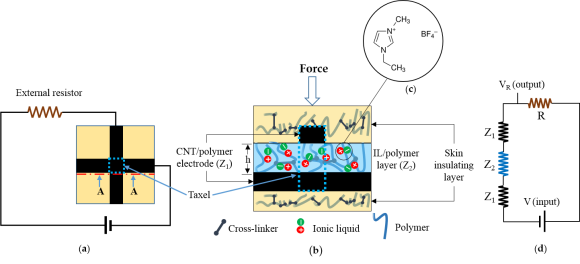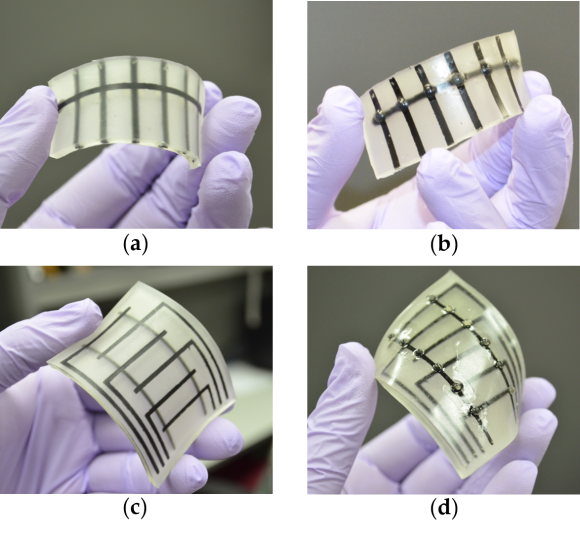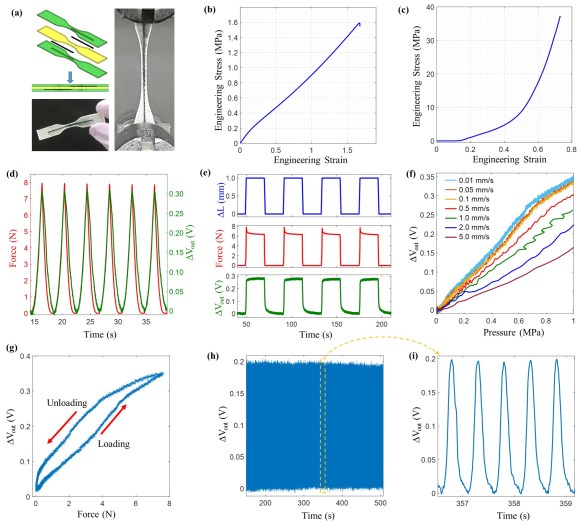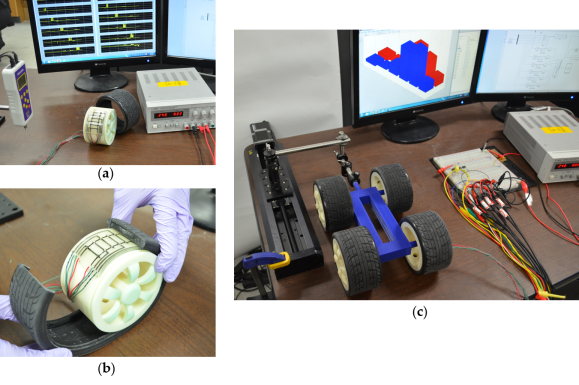Using the direct-print process, various tactile sensors have been developed. These sensors are stretchable, flexible and pressure sensitive.
Sensing principle
“The proposed flexible sensor consists of five layers. There are two layers of a multi-walled carbon nanotube (MWNT)/polymer composite which work as conductive electrodes. An ionic liquid(IL)/polymer composite layer is sandwiched between these electrodes. This intermediate layer is piezoresistive and contributes to the sensitivity of the sensor under force. The area where electrodes cross each other is the sensitive zone and called taxel (each sensing unit). Each taxel in the sensor is connected to a half Wheatstone bridge circuit and voltage across an external resistor is measured to evaluate the response of the sensor under external force. Due to IL incorporation into a prepolymer matrix to fabricate the intermediate layer, ionic conductivity appears in that layer. This ionic conductivity develops from the transportation of ions between coordinate sites of polymer chain under enough activation energy where the energy is provided by the external voltage source through creating potential difference between the electrodes. The sensor is deformed by external force, and the distance between electrodes, ‘h’, decreases. Moreover, the excitation in the IL/polymer piezoresistive layer occurs. These factors contribute in the drop of electrical resistance (Z2) of the intermediate layer, hence increase the voltage output across external resistor which is measured as output signal. The MWNT/polymer electrode can also be sensitive to pressure and can create crosstalk under deformation. To avoid that, a high loading ratio of MWNT (5 wt%) was used to fabricate the electrode which is higher than the electrical percolation threshold of MWNT/polymer composites. Electrical resistance of carbon nanotube based electrode was measured as 20 to 30 KΩ whereas IL based intermediate layer has resistance of few hundred (200-300) MΩ when connected to the circuit. And thus, while maintaining a higher electrical conductivity in the MWNT electrode, its piezoresistive effect on the sensor is negligible. Resistance Z2 is few thousand times higher than resistance Z1 for the proposed experiments. VR is measured to calculate the sensor response.” from [Emon and Choi, 2017, “Flexible piezoresistive sensors embedded in 3D printed tires,” Sensors, Vol. 17, No. 3, 656 (13 pages)]



Smart tires
